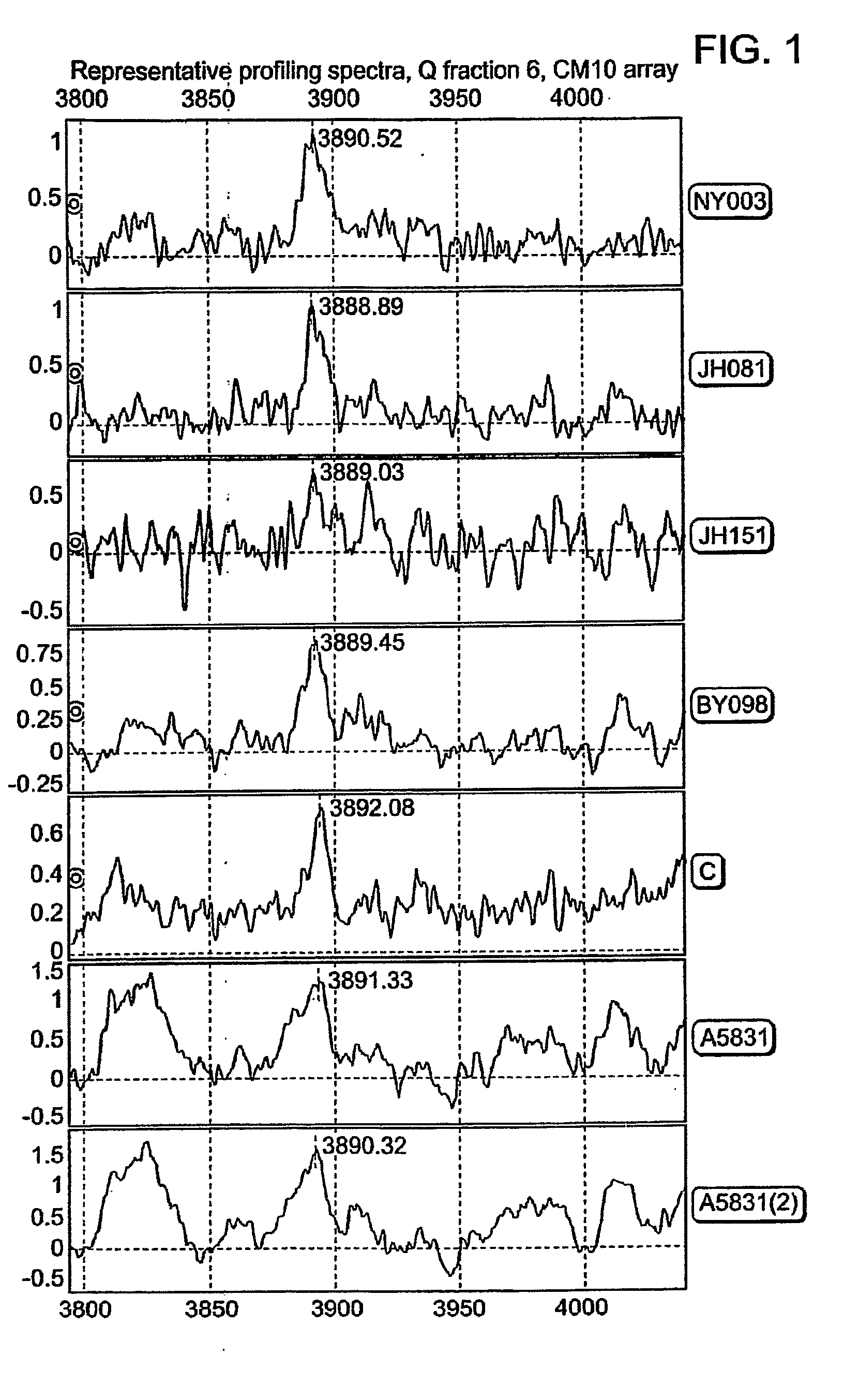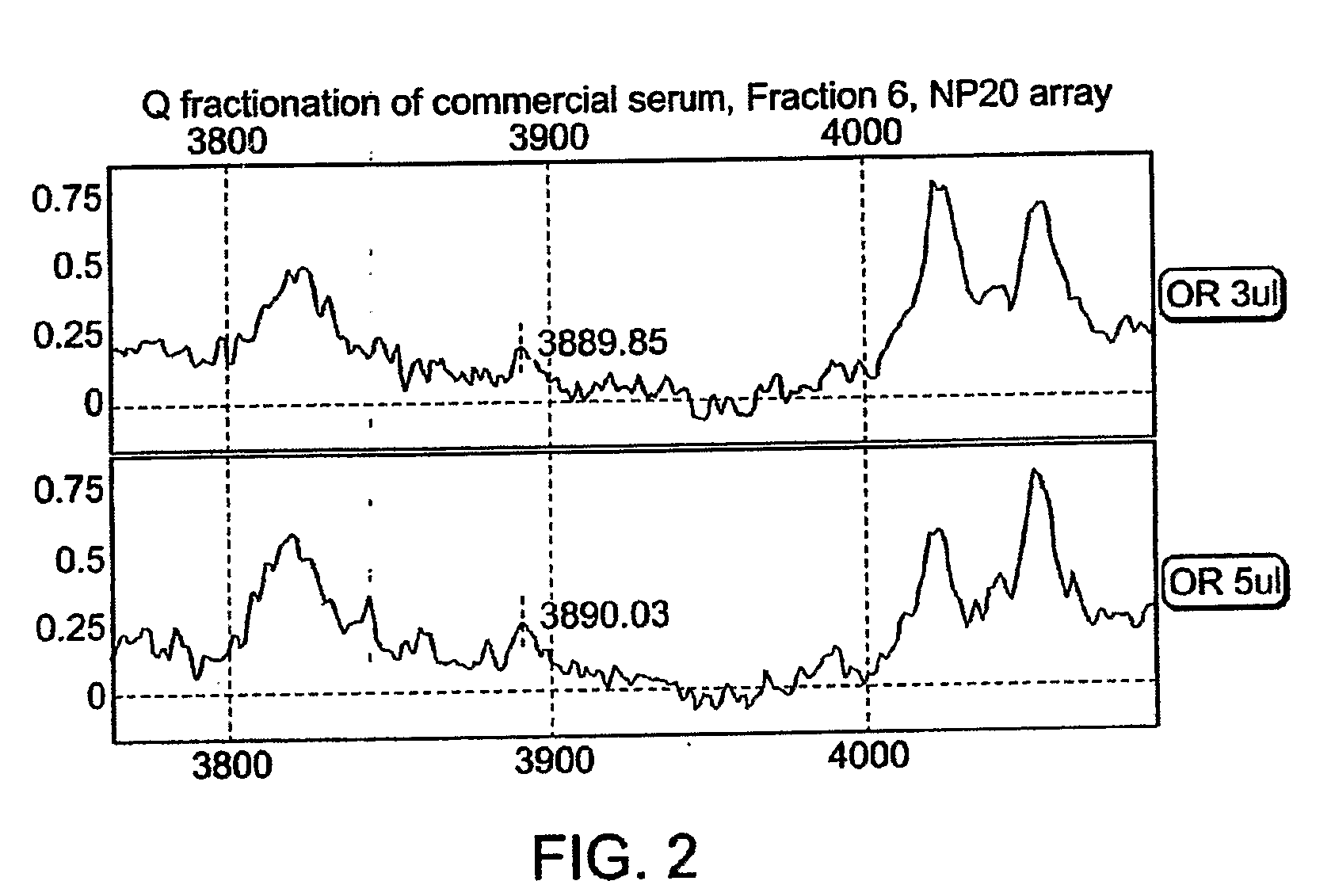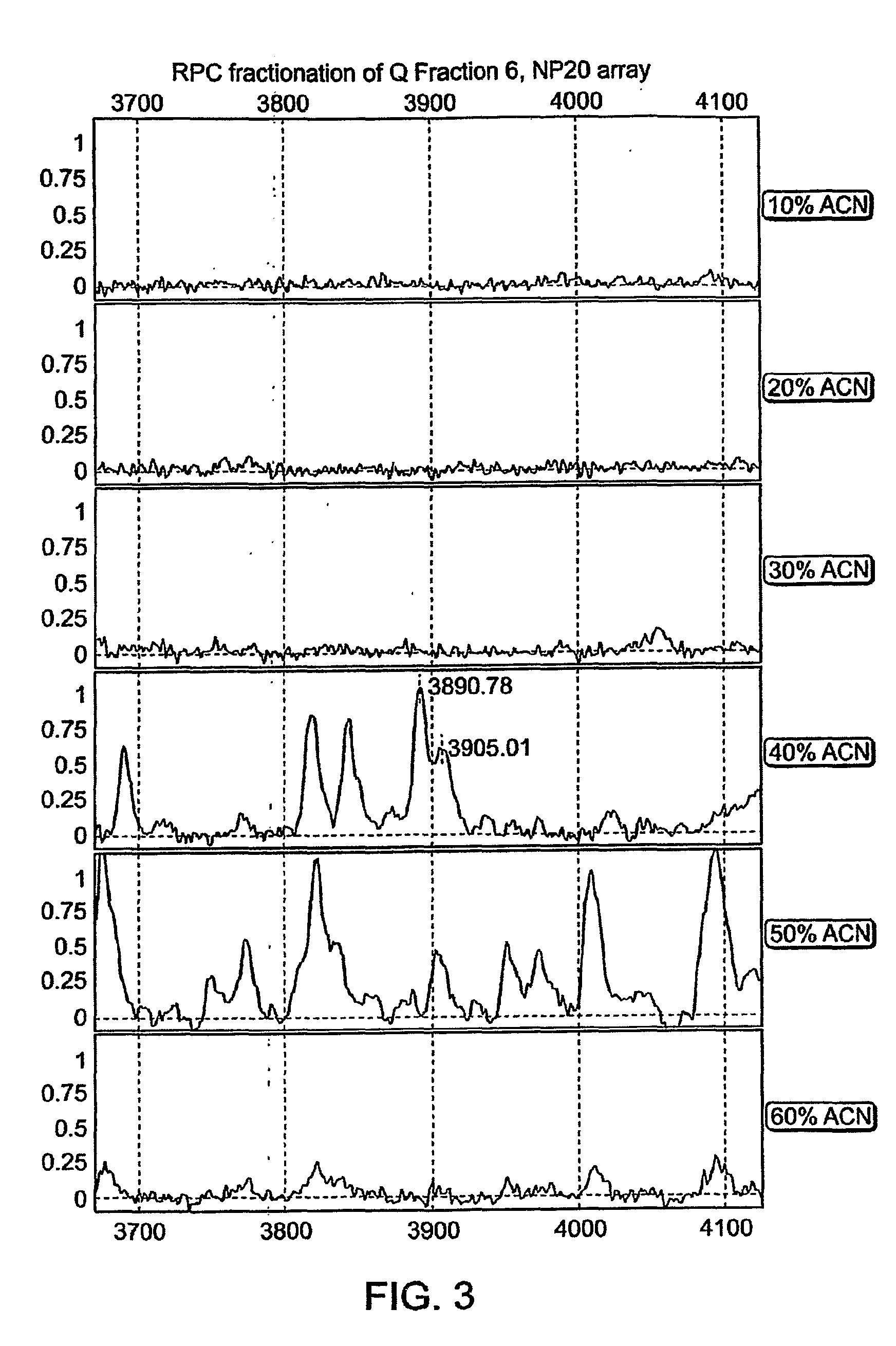Biomarker for Prostate Cancer
a biomarker and prostate cancer technology, applied in the field of biomarkers, can solve the problems of ineffective selection of patients by psa, inability to differentiate men with organ confined prostate cancer (who) from men without, and achieve the effect of limiting the number of markers detected
- Summary
- Abstract
- Description
- Claims
- Application Information
AI Technical Summary
Benefits of technology
Problems solved by technology
Method used
Image
Examples
example 1
Identification of Protein C Inhibitor
[0210]The 3890 Da protein was detected in Q fraction 6 using CM10 arrays. Provided representative profiling spectra were internally recalibrated using known identified proteins. The average MW (from seven spectra) of the targeted protein was calculated to be 3890.23 Da (FIG. 1).
[0211]The 3890 Da protein is present in the commercial pooled serum (FIG. 1, spectrum “C”). Importantly, in contrast to clinical samples the commercial serum is almost void of Platelet Factor 4, whose 2+ ion quite precisely overlaps with the ion of the 3890 Da protein. 1 ml of commercial serum was fractionated under denaturing conditions using anion exchange chromatography (Q HyperD F). Profiling of the organic fraction using NP20 array confirmed a presence of the 3890 Da peak (FIG. 2). Fraction 6 was further fractionated using reverse phase chromatography. The 3890 Da protein was eluted from RPC beads with 40% ACN (FIG. 3). Absence of PF4 in the resulting preparation conf...
PUM
 Login to View More
Login to View More Abstract
Description
Claims
Application Information
 Login to View More
Login to View More - R&D
- Intellectual Property
- Life Sciences
- Materials
- Tech Scout
- Unparalleled Data Quality
- Higher Quality Content
- 60% Fewer Hallucinations
Browse by: Latest US Patents, China's latest patents, Technical Efficacy Thesaurus, Application Domain, Technology Topic, Popular Technical Reports.
© 2025 PatSnap. All rights reserved.Legal|Privacy policy|Modern Slavery Act Transparency Statement|Sitemap|About US| Contact US: help@patsnap.com



